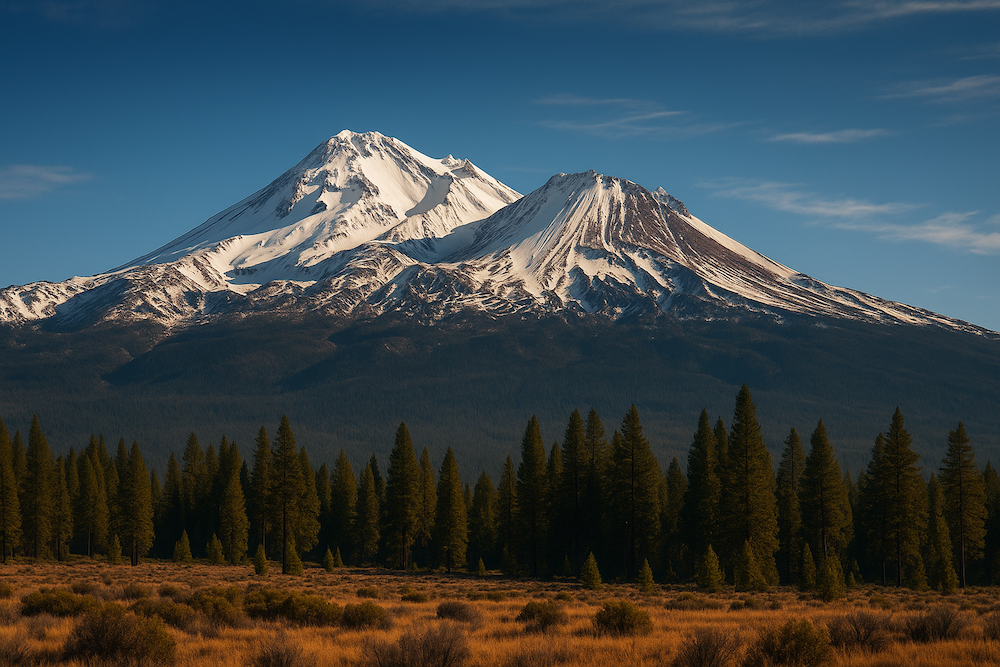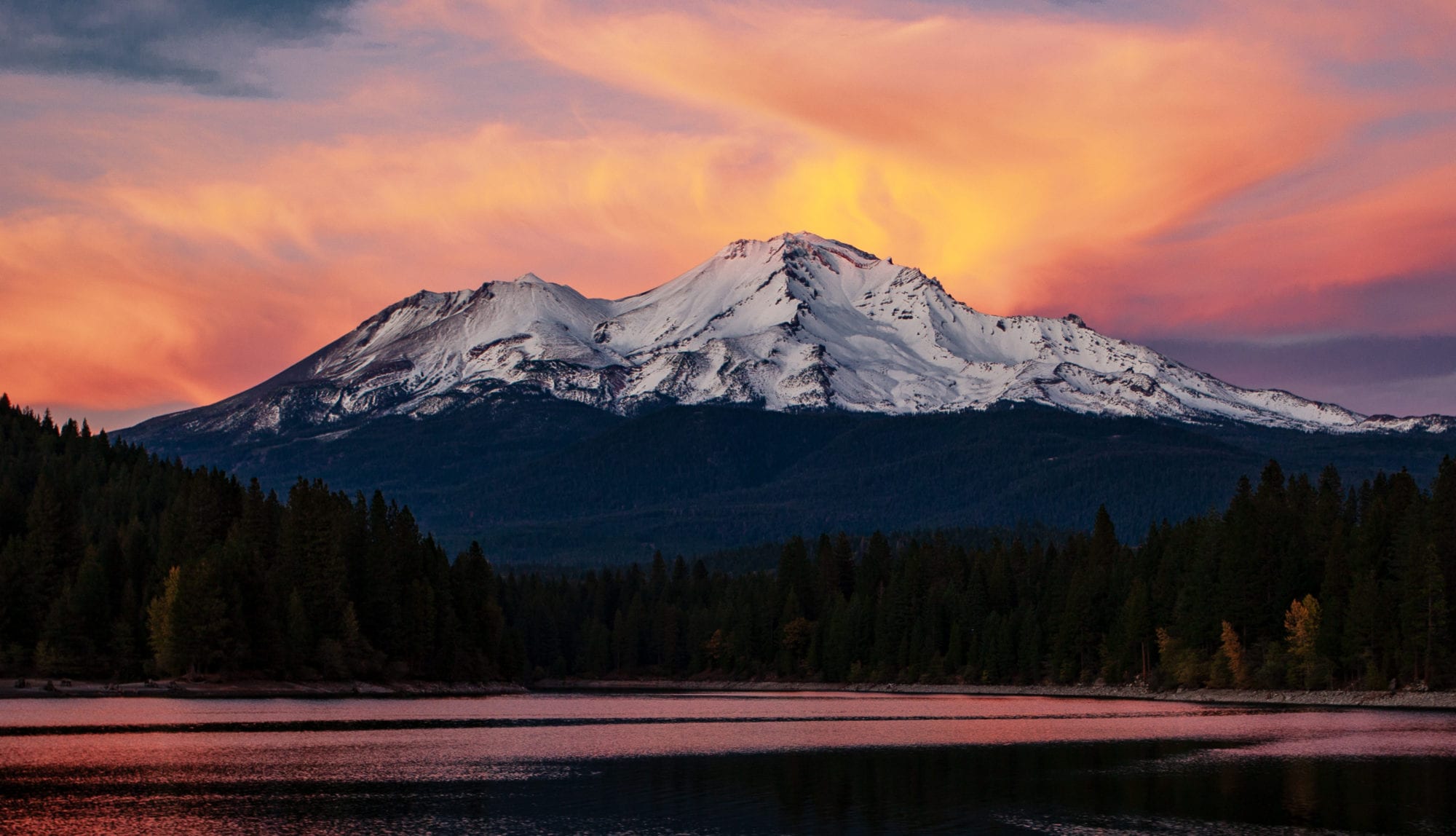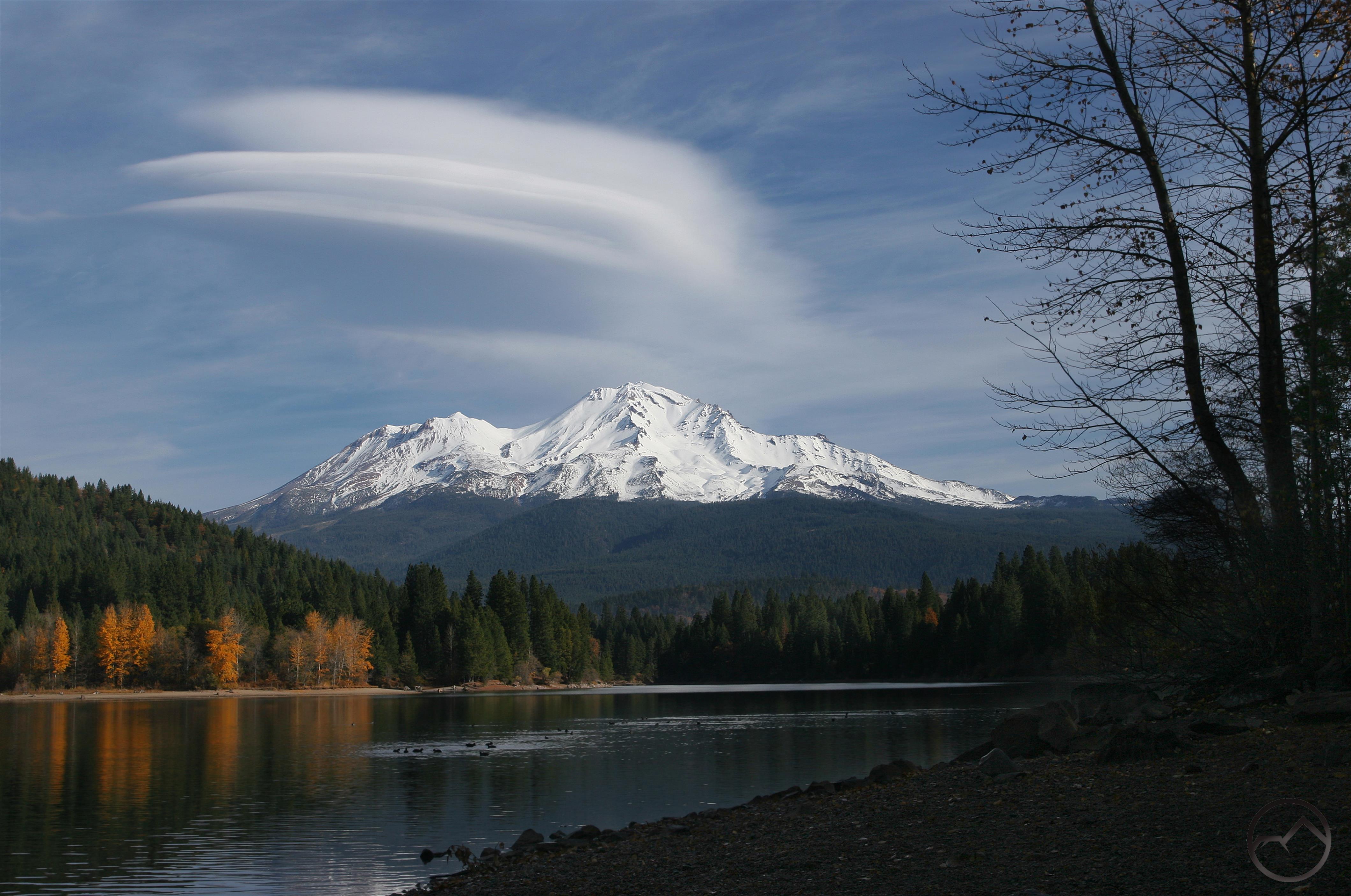Where the beauty of volcanoes meets the mystery of the spirit in Northern California's most mysterious landmark
Mount Shasta, which rises majestically from the Cascade Range in Northern California, is more than just a geological wonder. For thousands of years, it has been a beacon for spiritual seekers, indigenous peoples, and people who love mysteries. This huge stratovolcano, which is 14,179 feet above sea level, catches the eye from more than 100 miles away. Its snow-covered peak rises alone into the sky. But under its big, scary appearance is a web of old stories, mystical beliefs, and strange events that have made it famous as one of the most mysterious places in the world.

A Geological Wonder: The Mountain's Scientific Basis
Mount Shasta is one of the most impressive things that nature has done in the Cascade Range. It is the largest stratovolcano in the whole chain. This huge rock started to form about 590,000 years ago, during four major cone-building episodes that were centered on different vents. The modern building we see today has been built over the last 250,000 years, with each period creating unique flows of andesite lava, block-and-ash, and mud.
The mountain has a complicated structure with many interesting parts. Shastina, a prominent subsidiary cone that rises to 12,330 feet, is on the western flank. It was formed during the Holocene period, along with the main Hotlum cone, which is now the top of the mountain. There are five major glaciers on the mountain: Bolam, Hotlum, Konwakiton, Whitney, and Wintun. Whitney Glacier is the largest glacier in California.
Mount Shasta's current shape came about in a disaster, which is probably the most dramatic thing about it. About 300,000 to 380,000 years ago, a mountain that was the ancestor of Mount Shasta fell down in one of the biggest landslides ever recorded on Earth. It covered more than 440 square kilometers (170 square miles) of Shasta Valley to the northeast. The hummocky ground we see today on the valley floor is a silent witness to this ancient geological disaster.
Volcanic Activity and Current Condition
Mount Shasta is still very much a volcano. The United States Geological Survey calls it a "very high-threat volcano" and puts it fifth on the list of the most dangerous volcanoes in the US. The mountain has erupted many times over its long history, with ten or more eruptions happening every 500 to 2,000 years, followed by longer periods of calm.
About 3,200 years ago, there was a big eruption. There may have been smaller steam explosions as recently as 1,800 to 200 years ago. Hot springs and volcanic gases that seep from the top of the mountain are signs that the mountain is still volcanically active. This means that there is still a relatively young and hot magma system below.
Sacred Foundations: Native American Heritage
Many Native American tribes held Mount Shasta in high spiritual regard long before European explorers saw it. Archaeological evidence shows that people lived in the Mount Shasta area for at least 7,000 years, and by 5,000 years ago, there were large settlements there.
Nine different Native American tribes lived near Mount Shasta when Europeans first came into contact with them in the 1820s. These tribes were the Shasta, Okwanuchu, Modoc, Achomawi, Atsugewi, Karuk, Klamath, Wintu, and Yana. For all these different cultures, Mount Shasta was more than just a geographical landmark; it was the holy center of creation itself.

The Story of the Shasta Creation
The Shasta people thought that the Great Spirit made Mount Shasta by pushing ice and snow down through a hole from heaven. They then used the mountain as a way to get to Earth. The Great Spirit made the natural world from this holy place. For example, it breathed life into tree leaves to make birds, broke twigs to throw into streams where they became fish, and spread branches around the forest to make animals.
The Sacred Spring of the Wintu
The Wintu tribe believes that their ancestors came from a sacred spring on Mount Shasta, which they see as the home of the Great Spirit. For many generations, they have held sacred ceremonies on the mountain, such as yearly ritual dances that keep the sacred springs flowing. The Winnemem Wintu Tribe still follows these old traditions today, even though their numbers have dropped from about 14,000 to only 150.
"Our beginning of life comes from Mt. Shasta, so all those stories up and down the river have meaning—from Yellow Jacket Mountain, to Fox Mountain, to the Sucker Pools, all these have stories that belong to the Winnemem people and songs that go with them."
The I AM Movement: Ascended Masters on Holy Ground
In the 1930s, the spiritual reputation of Mount Shasta got a lot of attention around the world because of the experiences of Guy Ballard, a mining engineer who met mystical beings. This led to one of the most important New Age movements in the United States.
Ballard said that in 1930, while hiking alone on the slopes of Mount Shasta, he met the "Count of St. Germain," a famous 18th-century French "wonderman" who was known for his alchemical skills and claims of finding the elixir of life. Ballard said that St. Germain looked like "a magnificent God-like figure—in a white jeweled robe, with a Light and Love sparkling in his eyes that revealed and proved the Dominion and Majesty that are his."
People say that St. Germain gave Ballard a cup of "pure energy" and told him about Ascended Masters, which are spiritually enlightened beings who have died and come back to share their knowledge with people. People said that these beings, including Jesus Christ, used Mount Shasta as a base of operations and a place to meet for their missions on Earth.
The Lost Civilization Theory: Lemuria Rising
One of the most well-known and long-lasting stories about Mount Shasta is the idea of Telos, a hidden crystal city inside the mountain where Lemurians—people who lived on the lost continent of Lemuria—live. This mythology is now a big part of what makes Mount Shasta a mystical place.

Where Lemuria Came From
The idea of Lemuria came from real science in the 1800s, when zoologist Philip Sclater suggested a hypothetical sunken continent to explain lemur fossils found in Madagascar and India. But spiritual movements quickly took this scientific idea and turned it into something much more complex.
Modern Lemurian mythology says that Lemuria was an advanced civilization in the Pacific that existed thousands of years before Atlantis. People said that the Lemurians were very advanced, peaceful people who had mastered both spiritual enlightenment and advanced technology. When Lemuria and Atlantis fought a terrible thermonuclear war that sank both continents, the Lemurians who survived fled underground and made their new home in Mount Shasta.
Living in Telos
Modern Lemurian believers say that Telos is a crystal city with many levels that goes deep into Mount Shasta. According to reports, this secret city is home to thousands of immortal Lemurians who have improved their civilization over thousands of years. People say that these beings are seven to eight feet tall, have advanced technology that runs on crystals, and stay immortal by practicing better spiritual practices.
The Metaphysical Mountain: Energy Vortex and Planetary Chakra
In addition to its place in certain myths, Mount Shasta has become known in New Age circles as a powerful "energy vortex" and spiritual gateway. Many people who practice believe that the mountain is one of Earth's "chakra points." Some say it is the planetary root chakra, while others say it resonates with crown chakra energy.
Vortex Events
Many spiritual seekers have had strange experiences around Mount Shasta, such as:
- Improved meditation states that are easier to reach than in other places
- More powerful psychic abilities and clearer intuitive guidance
- Physical feelings of energy or vibration when you go to certain places
- Mystical encounters with beings of light or other entities that aren't physical
- Spontaneous healing experiences during visits
- Vivid dreams and visions that often include the mountain
Modern Spiritual Tourism: A Place for Pilgrimage Around the World
Mount Shasta gets about 26,000 visitors a year, and many of them come because of its spiritual reputation. Mount Shasta, a small city with a population of 3,300, is home to more than 100 spiritual groups and 29 New Age businesses, making it a one-of-a-kind cultural ecosystem.
Conclusion: The Intersection of Science and the Sacred
Mount Shasta is a unique place where geology, Native American knowledge, and modern spiritual searching come together. The mountain deserves respect and inspires awe, whether you look at it from the point of view of volcanology, anthropology, or mystical experience.
The scientific facts about Mount Shasta, such as its volcanic power, geological history, and ecological importance, are enough to make people wonder without any extra information. As a sacred place for Native Americans, it is part of a cultural heritage that goes back thousands of years and should be protected and respected. The mountain's appeal to contemporary spiritual seekers illustrates humanity's persistent yearning for a connection with the sacred in an increasingly secular society.
In the end, the real magic of Mount Shasta may not be any supernatural event, but its ability to spark wonder, respect for indigenous knowledge, and a deep connection to nature that we need so badly in today's world. Mount Shasta is both a real volcano and a symbol of the sacred that will never go away. It continues to be a beacon for everyone who wants to find meaning in the meeting of earth and sky, matter and spirit, science and mystery.
